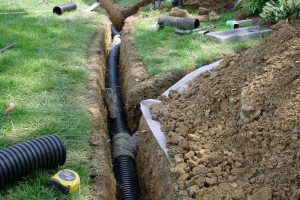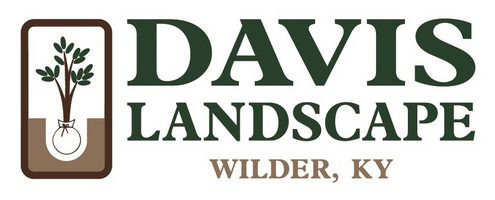 Dealing with a perpetually soggy yard can be a frustrating and unsightly challenge for homeowners. Waterlogged landscapes not only create an eyesore, but they can also lead to a host of other problems, from difficulty mowing to potential structural damage. Fortunately, there are a variety of proven strategies and techniques that can help address residential drainage issues and transform your outdoor space into a lush, well-drained oasis. In this comprehensive guide, we’ll explore the common causes of yard drainage problems, and delve into a range of effective solutions to help you reclaim your property and keep it looking its best.
Dealing with a perpetually soggy yard can be a frustrating and unsightly challenge for homeowners. Waterlogged landscapes not only create an eyesore, but they can also lead to a host of other problems, from difficulty mowing to potential structural damage. Fortunately, there are a variety of proven strategies and techniques that can help address residential drainage issues and transform your outdoor space into a lush, well-drained oasis. In this comprehensive guide, we’ll explore the common causes of yard drainage problems, and delve into a range of effective solutions to help you reclaim your property and keep it looking its best.
Identifying the Culprits: Common Causes of Yard Drainage Issues
Before tackling the problem, it’s essential to understand the underlying causes of your yard’s drainage woes. Some of the most prevalent factors contributing to poor drainage include:
Low Spots and Uneven Terrain
Depressions, sunken areas, and an overall lack of slope in your yard can cause water to accumulate and stagnate, leading to waterlogged conditions. These low spots often result from improper grading during the initial landscaping or from soil settling over time.
Clogged or Ineffective Downspouts
When downspouts are too short or clogged with debris, they can channel water directly into your landscaped areas, creating puddles and muddy patches.
Compacted Soil
Heavily trafficked areas or poorly aerated soil can become compacted, preventing water from efficiently infiltrating the ground and leading to surface pooling.
Blocked Drainage Paths
Walkways, driveways, and other hardscaping features can act as barriers, obstructing the natural flow of water and causing it to accumulate in unwanted areas.
Excessive Watering
Overwatering your lawn or garden can contribute to drainage issues, as the soil becomes oversaturated and unable to absorb the excess moisture.
Neighboring Property Runoff
In some cases, water from a neighboring property may be draining onto your land, exacerbating your drainage problems.
Understanding the specific causes of your yard’s drainage woes is the first step in selecting the right solution(s) to address the issue effectively.
Exploring Simple Fixes: Downspout Extensions and Watering Adjustments
Before delving into more complex drainage solutions, it’s worth exploring some straightforward, DIY-friendly options that can make a significant difference.
Extend Those Downspouts
One of the easiest and most cost-effective solutions is to extend your downspouts, ensuring that the water is directed away from your landscaped areas and into a more suitable location, such as a storm drain or a lower-lying area of your property. This simple adjustment can often resolve issues caused by downspouts that are too short or improperly positioned.
Adjust Your Watering Habits
Another potential quick fix is to reevaluate your watering schedule. Overwatering your lawn or garden can contribute to waterlogging, so try reducing the frequency and duration of your irrigation. Monitor the affected areas, and if the problem persists after adjusting your watering routine, it’s time to consider more comprehensive drainage solutions.
Creating Drainage Pathways: Swales, Creek Beds, and Rain Gardens
If the simple fixes don’t alleviate your yard’s drainage woes, it may be time to explore more substantial solutions that involve reshaping the landscape to guide water away from problem areas.
Construct Swales and Creek Beds
Swales and creek beds are shallow, gently sloping depressions or channels that can be strategically placed to redirect water flow. These features can be lined with gravel, stones, or even decorative plants to create an attractive, functional drainage system. By guiding water away from low spots and toward a designated discharge point, such as a dry well or rain garden, you can effectively manage excess moisture.
Incorporate a Rain Garden
A rain garden is a depression filled with water-loving plants that is designed to capture and temporarily hold runoff, allowing it to slowly infiltrate the soil. These specialized gardens not only enhance your landscape’s aesthetics but also provide an environmentally friendly way to manage drainage issues. By selecting native, deep-rooted plants, you can create a visually appealing and highly effective solution for areas prone to standing water.
Subterranean Solutions: French Drains and Dry Wells
For more stubborn drainage problems or situations where surface-level modifications are not feasible, consider turning to underground drainage systems.
Install a French Drain
A French drain is a perforated pipe buried beneath the soil, surrounded by gravel or other porous material. This system collects and channels excess water away from problem areas, dispersing it gradually into the surrounding soil. French drains can be particularly effective in addressing issues caused by low spots, compacted soil, or water runoff from neighboring properties.
Incorporate a Dry Well
A dry well is a subsurface reservoir filled with gravel or other aggregate material, designed to capture and slowly release excess water into the soil. By strategically positioning a dry well, you can create a centralized collection point for water, preventing it from accumulating on the surface. Dry wells can be used in conjunction with French drains or other drainage features for a comprehensive, multi-pronged approach.
Maintaining and Monitoring Your Drainage System
Regardless of the drainage solutions you implement, it’s crucial to regularly maintain and monitor your yard’s water management system to ensure its continued effectiveness.
Periodic Inspections and Cleanups
Regularly check for any blockages or debris buildup in your gutters, downspouts, swales, or other drainage features. Clear away any obstructions to keep the water flowing freely. Additionally, be vigilant for any signs of erosion or shifting that may compromise the integrity of your drainage system.
Adjusting and Adapting
As your landscape evolves over time, you may need to make adjustments to your drainage system. Monitor the performance of your solutions during heavy rainfall or snowmelt, and be prepared to make modifications, such as expanding a dry well or rerouting a French drain, to address any emerging issues.
Consulting Professionals
For complex or persistent drainage problems, it may be wise to consult with a landscape professional or drainage specialist. These experts can conduct a comprehensive assessment of your property, identify the root causes of your drainage woes, and recommend tailored solutions that address your unique needs.
We Help Clients Fix Yard Drainage Problems
Landscaping installation and maintenance are essential components of creating and preserving visually appealing and functional outdoor spaces. Effective landscaping installation involves the strategic placement of various elements such as plants, trees, hardscapes, and irrigation systems to enhance the aesthetic and environmental value of a property.
> Learn More
Transforming a soggy, waterlogged yard into a lush, well-drained outdoor oasis is a achievable goal with the right strategies and techniques. By understanding the common causes of drainage issues, exploring simple fixes, and implementing more substantial solutions like swales, rain gardens, French drains, and dry wells, you can effectively manage excess moisture and create a functional, visually appealing landscape. Remember to maintain and monitor your drainage system regularly, and don’t hesitate to seek professional guidance when needed. With a proactive approach and the right drainage solutions, you can reclaim your yard and enjoy a thriving, well-drained outdoor space.
Contact Us (859-781-0677) for More Information!
—

About Davis Landscaping
Davis Landscape Design & Installation has been providing landscaping services to customers in Northern Kentucky and Greater Cincinnati since 1965! We know that the landscape design process can be overwhelming, so we work with you tirelessly to better understand your vision. At Davis Landscape Design & Installation, we’re on your team and we know how to listen and deliver. > Learn More
